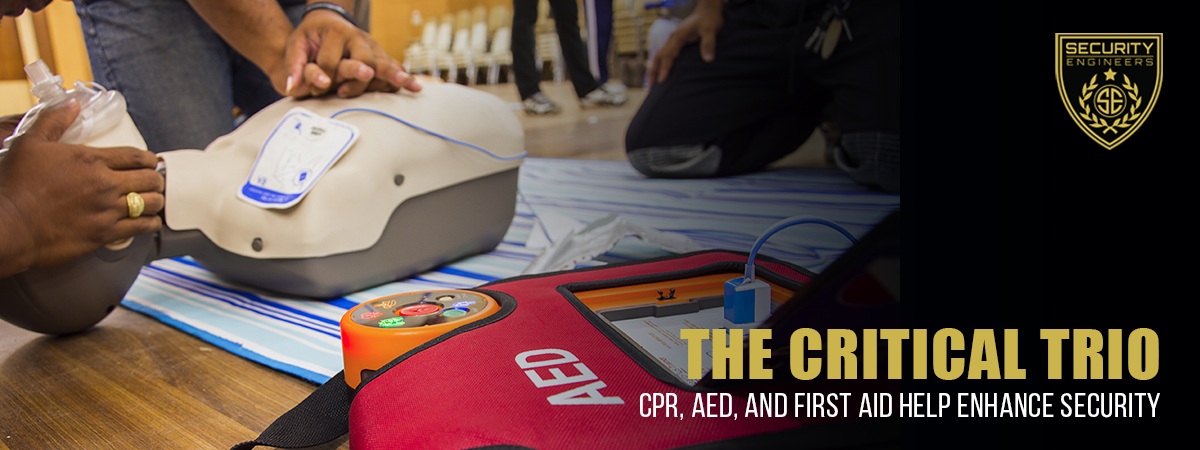
The Critical Trio: CPR, AED, and First Aid Help Enhance Security
Introduction:
In a world filled with uncertainties, ensuring the safety and security of individuals is paramount. While traditional security measures often focus on surveillance, access control, and emergency response teams, there’s a trio that plays a pivotal role in enhancing security in a different way — CPR (Cardiopulmonary Resuscitation), AED (Automated External Defibrillator), and First Aid. These life-saving techniques go beyond the conventional understanding of security and contribute significantly to creating a safer environment for everyone.
- Rapid Response to Medical Emergencies: Security isn’t just about deterring external threats; it also involves addressing internal risks, such as sudden medical emergencies. Whether it’s a cardiac arrest, choking, or a severe injury, the ability to provide immediate and effective CPR, AED, and First Aid can be the difference between life and death. Trained individuals within a secure environment can swiftly respond to medical crises, minimizing the impact and potentially saving lives.
- Creating a Culture of Preparedness: Security is not solely the responsibility of designated personnel; it’s a shared responsibility among the entire community. Integrating CPR, AED, and First Aid training into security protocols creates a culture of preparedness. When individuals are educated and confident in their ability to respond to medical emergencies, the overall security of a place is enhanced. This proactive approach ensures that everyone is an active participant in maintaining a more secure environment.
- Reducing Response Time: In the realm of security, response time is crucial. Medical emergencies require immediate attention, and delays can have severe consequences. CPR, AED, and First Aid training empower individuals to act swiftly in critical situations, significantly reducing the response time. Quick and efficient intervention can stabilize a person’s condition until professional help arrives, contributing to the overall security of the environment.
- Enhancing Workplace Safety: For businesses and organizations, the security of their workforce is a top priority. Incorporating CPR, AED, and First Aid training as part of workplace safety measures not only complies with regulatory standards but also fosters a safer working environment. Employees equipped with these skills become valuable assets in ensuring the well-being of their colleagues, reinforcing the overall security fabric of the organization.
- Public Spaces and Community Security: Public spaces, such as malls, parks, and educational institutions, cater to a diverse range of individuals. Having a well-trained community capable of providing CPR, using AEDs, and administering First Aid transforms these spaces into safer havens. This sense of security fosters a positive environment, attracting more individuals and contributing to the overall well-being of the community.
Conclusion:
While traditional security measures focus more on external threats, the trio of CPR, AED, and First Aid provides a unique and essential layer of security by addressing internal risks. By integrating these life-saving techniques into security protocols, we not only create a safer environment but also empower individuals to take an active role in their own and others’ well-being. In a world where emergencies can strike at any moment, the critical trio becomes an indispensable component of a comprehensive security strategy.
To learn more about how Security Engineers can help develop a comprehensive security strategy for your business, please fill out the form below, call us at 205.251.0566 or email us at [email protected].